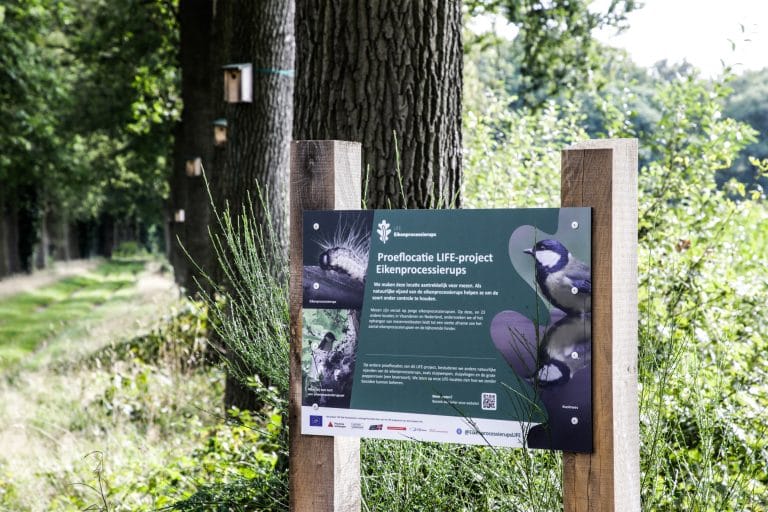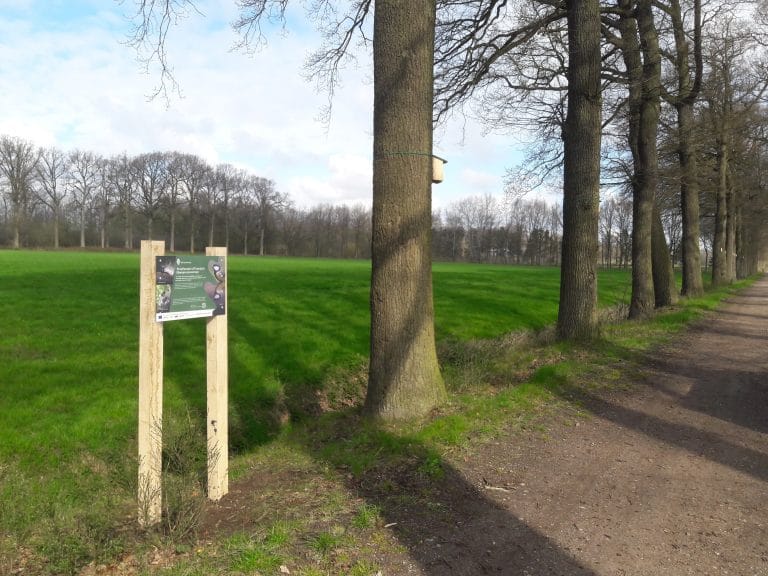LIFE Oak Processionary Caterpillar – the end is in sight!
Looking back at our symposia, our own nature film and the first instruments in our toolkit

Looking back at our symposia, our own nature film and the first instruments in our toolkit

One of the ambitions of the LIFE project was to establish an international expert group on the Oak processionary caterpillar, with the primary objective of…

The Forest caterpillar hunter has various, mainly hairy, caterpillars on its menu that are avoided by other animals. That is why he is a welcome…

Significantly fewer biocides used in the management of the oak processionary caterpillar in the Netherlands and Flanders

Important steps in the ivy experiment and the forest caterpillar hunter-experiment, little progress in the predatory birds-experiment, still waiting for results on the experiment with parasitic flies/parasitic wasps

Lots of action and a major breakthrough in the breeding experiment with the Forest Caterpillar Hunter

A welcome visit from colleagues from the UK, and a joint search for the Forest Caterpillar Hunter

A quiet caterpillar season, an unexpected visit to Jersey and a sequel to the story of the forest caterpillar hunter

And what about the oak processionary caterpillar this year? That is currently the key question for many local governments.

Not just outside life is moving up a gear. The first forest caterpillar hunters are already active again in the labs of the Provincial Nature…

On November 21, we organized a meeting and inspiration day for the ambassador municipalities within the LIFE project.

Initial results show that an average of 67% of the caterpillars are killed by parasitoid wasps and flies. A good result for the project, which investigates how to use natural enemies to keep the caterpillar under control.

Bird counts and nest box controls were also this year carried out at all test locations for tits. We found more different species in the nest boxes and the litter sizes were also larger than last year. In addition to many Great and Blue Tits, we counted 11 nests of the Pied Flycatcher.

At the end of May, a group of forest caterpillar hunters (beetle) was moved from the lab to the outdoors. By placing the beetles together with some young oaks and oak processionary caterpillars in a closed, but water and wind-permeable tent, the researchers can determine if the beetles feed on the caterpillars in a more natural environment.

Eggs and adults of the forest caterpillar hunter imported from Turkey are currently being reared and cared for in labs in Antwerp and Limburg.

Our beetle team went to visit the local facilities of the General Directorate of Forestry in Izmir to learn more about how to breed the forest caterpillar hunter.

In June and October, we submitted a questionnaire to our ambassadors to examine, among other things, the use of biocides, the curative treatment of the OPC and the use of ecological management methods. You can read the first results here.

Get to know our ambassador municipalities

Over the past two weeks, we have organized demonstration events at our test locations in the provinces of Antwerp (BE), Limburg (BE), Noord-Brabant (NL) and Sittard-Geleen (NL).

Our first results indicate that both tits and parasitic wasps and flies may play an important role in mitigating nuisance caused by the oak processionary caterpillar.

Attend one of our demonstration events at the end of September and learn more about the progress, objectives and first results of the project. We will also visit some of our field locations.

In the coming weeks, we will be installing no fewer than 81 information boards at our test locations throughout Flanders and the Netherlands to inform passers-by about test setups and our LIFE project.

Male tits are inspecting our new LIFE nest boxes. The first results are promising!

Looking for suitable trial locations in Sittard-Geleen and a short introduction to the 3 ecological techniques.

Because we value sustainability, this LIFE project will use nesting boxes manufactured from wood with a PEFC certificate.

Every year, in all participating provinces, there will be demonstration moments when we will showcase the effectiveness of our trials at locations with and without natural enemies.